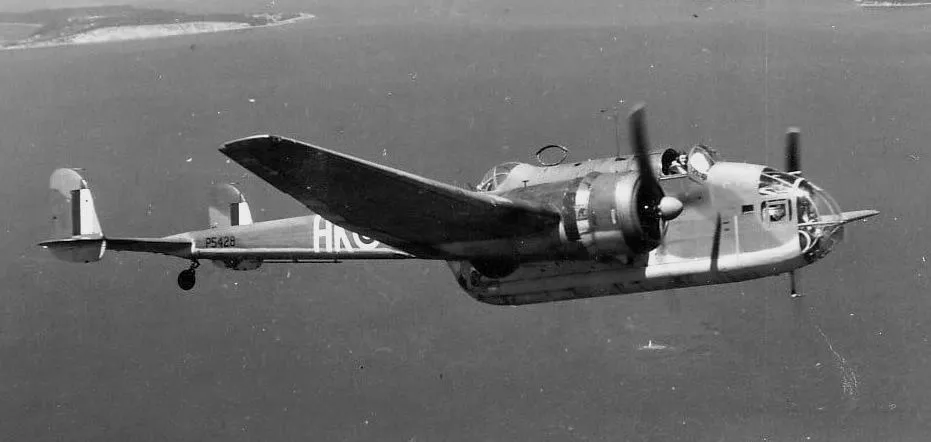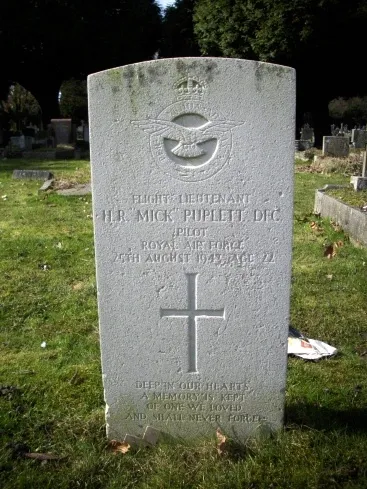Faulks, Cecil Arthur (Squadron Leader)
Survived 1943-August-25


Birth Date: unkown date
Born:
Parents:
Spouse:
Home:
Enlistment:
Enlistment Date: unkown date
Service
RAFVR
Unit
519 (Met) Sqn- Squadron (RAF)
Base
RAF Wick
Rank
Squadron Leader
Position
Wireless Operator/Air Gunner
Service Numbers
135462
Crew or Other Personnel
Hampden P2118
Mission
Hampden Mk. l P2118
Search 1943-August-25 to 1943-August-25
519 (Met) Sqn (RAF) RAF Wick
519 Squadron (Undaunted by Weather) RAF Wick. Hampden I aircraft P2118 crashed into high ground at Ben Loyal, Sutherlands, Scotland at night during a thunderstorm returning from a search for missing 519 Squadron Hampden I aircraft P5334
Pilot, Flight Lieutenant Henry Robert (Mick) Puplett DFC (RAFVR) was killed in the crash of his aircraft
Navigator, Flying Officer GW Ritchie (RCAF) and Wireless Operator/Air Gunner Flight Sergeant TRT Hudson-Bell (RCAF) initally survived the crash but sadly both died from their injuries the following day. There was possibly a fourth unconfirmed death of another unnamed Navigator/Observer. Further research is required
The sole survivor from this crew was a second Wireless Operator/Air Gunner, Flying Officer CA Faulks (RAFVR), seriously wounded but recovered to fly with his Squadron again
No trace of Hampden P5334 was found
![]() [Royal Air Force Serial and Image Database]...
[Royal Air Force Serial and Image Database]...
![]() Hampden R2118 on Ben Loyal, Northern Scotland
Hampden R2118 on Ben Loyal, Northern Scotland
![]() Ben Loyal - 746 metres and an epic rescue after a plane crash of a...
Ben Loyal - 746 metres and an epic rescue after a plane crash of a...
Hampden serial: P2118

Handley Page Hampden (Serial No. P5428), of No. 32 Operational Training Unit at RCAF Patricia Bay, British Columbia, in the torpedo-bomber training role between May 1942 and February 1944.
Handley Page developed a modern stressed-skin mid-wing monoplane, powered by Bristol Pegasus radial air cooled engines, with its first flight in 1936. It had the most advanced wings available at the time, giving it a remarkably low landing speed of 73 mph for an aircraft of its size, with a top speed of 265 mph. The Hampden had a short, narrow but tall main fuselage with a very slender tail unit. This configuration led to the nicknames "Flying Panhandle" and "Flying Suitcase". At the end of the war, no complete or partial Hampden aircraft were retained for museum display.
The Hampden served in the early stages of the war, bearing the brunt of the early bombing war over Europe, taking part in the first night raid on Berlin and in the first 1000-bomber raid on Cologne. In Canada, Hampdens were built by six companies that formed Associated Aircraft. There were three in Ontario and three in Quebec, hence they were identified as the Ontario Group and Quebec Group. They supplied all the the components to the two assembly plants. The Ontario Group's assembly plant was at the Malton Airport, while the Quebec group's assembly plant was at the St. Hubert Airport. Canadian Museum of Flight and Harold A Skaarup web page




